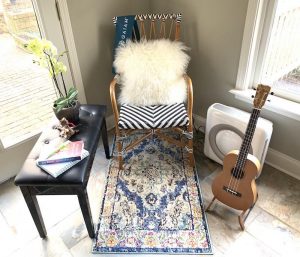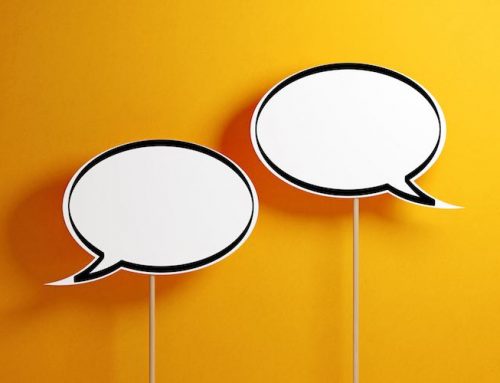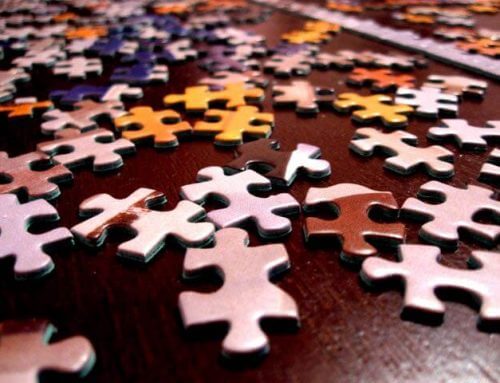
February 27, 2019 by Courtney Cutchins
9 Ways to Create an Awesome Practice Space (And Finally Enjoy Practicing!)
(For musicians – or any other creative professional…)
Practicing. Creating. Existing. This is challenging stuff. Over the past few years, my own experience with practicing has changed from absolutely hating every moment to truly loving my time for artistic work. As a vocalist, this shift has changed my life and musicianship in so many ways, I can’t even tell you – but one of the things that helped me the most was changing my mindset about my practice space. So, I’m going to start this post off with a bit of a rant about the practice mindset because I need to make a point about why this actually matters.
There’s a certain sect of musicians (I used to be one of them) who believe that practice equals pain and that hard work should be, well, real hard – like “if I have to do this for one more minute, I’m going to suffer a complete mental breakdown” sort of hard. These people believe that if they’re not challenging themselves to the point of collapse or desperation, then, well, they might as well quit, because clearly they don’t love their art enough. Or, they think that great art comes from great anguish. Or, they may even believe that they deserve this suffering because they chose to follow their “passion” – and that this is a required part of simply being who they want to be. (Wherever would they have gotten that idea, Society?) This cannot be good for the creative psyche. Suffice it to say, this is (hopefully becoming) extremely antiquated thinking. History has shown us that this mindset typically doesn’t work out well for these artists – they’re usually pretty unhappy – and they just can’t maintain this lifestyle for very long. For more thoughts on this subject, check out Big Magic by Elizabeth Gilbert where she talks about the “martyr” and the many problems with the “tortured artist” concept. (Elizabeth Gilbert, I love you!)
That’s one side of the issue. On a less serious note, there are also many aspiring musicians and music students who just don’t practice (also used to be me) – and while I’m not at all being critical, I just know that their musicianship and love for the craft would greatly improve if they did. I often encourage my clients to start their creative journey by first creating their creative environment – in order to help set them up for the best chance for success.
So what does this have to do with practicing and your practice space? Um… Everything! If you believe that practice should make you miserable – or if you find it’s terribly unpleasant business – or if you find it’s simply not getting done for one reason or another – then start by looking at your space. Your practice space and your practice are all part of the same thing. Our environment affects our minds which affect our bodies which affect our voices and our ability to create, speak out and take risks. This affects our life outlook and how everything is perceived – and a negative environment ultimately inhibits our ability to do much of anything.
This post is not at all about good interior design, but it is based on my many years of experience attempting to practice, floundering and suffering, in uninspiring or even harmful environments. (I also needed to learn what to practice in order to get results, but more on that some other time.) I know that much about a “creative journey” can bring up a lot of judgements and strong feelings which are good to acknowledge. Being creative and challenging yourself to grow in your artistry can be an extremely vulnerable process. In order to be vulnerable, we have to expose the deepest parts of ourselves – and we have to nurture the little kid inside of us that once loved to make and play and create. Remember when all this stuff used to be – dare I say it – fun? Your space symbolizes all these things – and therefore must be treated with respect. I ask that you read this list with an open mind because it can help – so much! So, booya, here are the tips.
1. Choose a Dedicated Spot
It’s important to choose a spot with intention and appreciation – and make it your own, in whatever way you can. I know a lot of musicians who just go to the garage or the “shed” (figuratively and literally) or the basement simply as a means to make noise, without giving a thought as to where they’re going and why they’re going to that location. If you want to grow in your artistry in a healthy way, this place has to make you feel good! And you’re not going to do that by only filling it with a ton of gear either – this spot has to have some soul. It must be as private a space as it can be. A place just for you and your inner self. Yes, sometimes space is limited – you live in a single room, or you need to be out of earshot, or there are no other options, and that’s fine! You do, however, have the choice of selecting a very specific spot that becomes your place to create. Is there an area by the window, the space at the foot of your bed or a cozy corner? Choose a spot, claim it as your own – then dress it up.
2. Go On a Magic Carpet Ride
Pardon the Aladdin reference – but isn’t “A Whole New World” one of the most nostalgic songs ever? And, for some of you, possibly appropriate for this post? Yes? Maybe? Okay, anyway, once you pick your spot, get yourself a rug. It can be big, it can be small, but choose something that you think looks nice and comfortable and lay it down. Not only does it help define your room-space-area-spot, but it gives you more grounding and support. (Depending on its size, it can help with acoustics, too!) And, thinking of it as a magic carpet is, well, magical, which never hurts (but just let us know if it takes off flying and you go to some dazzling place you never knew, k?)
3. Let There Be Light
You know the cartoons where the character gets an idea and a lightbulb appears above their head and it goes “ding?” Yeah, we’d all benefit from being more like that. You need light in your space to help illuminate your mind. That said, you also don’t want to be blinded – and many people have become surprisingly desensitized to bright lights. So, whatever you need to do to make your lighting situation better, do it. Maybe you need to add a nice lamp on a small table next to your rug – or maybe you need to move your spot closer to a window – or maybe you need a tall lamp to help illuminate the ceiling – or maybe you need twinkle lights – or maybe you need a light that helps brighten up that creepy corner – or maybe you need to open/close the blinds – or maybe you need brighter/dimmer or cooler/warmer bulbs – or maybe you need some candles – or whatever! Be the thing with the bulb above its head – and prepare for those “ding!” moments.
4. Textures
Textures. Oh, yes. Yum. I’ll admit, I have strong feelings about textures – more so than most people. I shop for clothes more with my hands than my eyes. I cannot, for the life of me, wear an itchy sweater. But, whether you have opinions about textures or not, I think textural elements benefit the creative mind just as any other stimulus does, especially if they bring delight and enjoyment. So, consider a fluffy blanket, a crunchy, wicker basket, smooth glass, shiny metal or sparkling, faceted crystals. Perhaps a pillow with beading or embroidery or a chair with velvet fabric – or a spiky plant or rough-hewn wood. What sort of textures speak to you? Get yourself at least a few highly-textured objects.
5. Claim Your Throne
Speaking of a chair – get one! I know, I’m a voice teacher, I should advocate for my clients to stand up while they sing – which, I do, usually. However, sometimes you have to rest – or sometimes there are too many other stresses in life and you just have to sit…down…. This chair is a tool for self care which gives you permission to take a break (because breaks are okay!) It’s also important to remember that you, the artist, are doing something rather grand and amazing by being present for your art. Dare I say that this should be considered your throne? You can’t just get a boring chair or grab a chair from the dining room table. Get a specific chair for your space that you love (though consider comfort-level and if it allows you to have good posture). It’s going to have your back (and your butt) through the thick and thin of your creative process.
6. Make It Easy on Yourself
I had a band teacher who used to say that the hardest thing about practicing was simply opening up your instrument case. In many ways, this is true. Just getting started can be the hardest step we take in any endeavor. (Again, this is why you need a great space that you actually enjoy going to!) What else can you do to make the “start” easier on yourself? Can you get a stand for your instrument so it can sit out, instead of being stuck in the case? Can you keep an amp and mic out so it’s easily accessible? Can you get a music stand for your sheet music to live on? Or a tripod or table for your phone or computer to make setup super easy? Whatever tools you use for your practice, just keep it simple, and readily available, so that you don’t have to do much else other than show up.
7. Work with a Friend
Sometimes practice is messy. Or you sound like garbage. Or you start to think you’re garbage. Or sometimes you get stuck. And then you get mad. Or you have to psychoanalyze yourself. Or you have to make that awful, squawky noise. Or you have to make – gasp! – a mistake. No matter how much you may need a friend in those instances, there’s no way you’re going to let another person witness all that, right? But – what if you had something else that represented a friend? I, for example, have a small, leopard-print dragon filled with sand who sits on my piano, sticking out his bright red tongue in defiance – because, hey, why not. His name is Scales. I bought him at Pike Place Market one spring while visiting and eating my way through Seattle. I like to think that he grew up in an awesome cave in the wilds of Africa – and was inspired by his leopard neighbors to make himself a delightful, spotted coat. (No leopards were harmed.) His favorite food is seafood and, one day, while hunting a particularly fast and wild fish, he accidentally chased it all the way across the ocean until he arrived at the Port of Seattle. Scales is into fashion design and likes to plot out his next statement piece while I carry on throughout my practice regimen for the day. Scales doesn’t judge me – Scales doesn’t even have ears – but he symbolizes just a bit of magic, support and dragon ferocity which helps me feel lighter and stronger in what can be a lonely process. (No, I’m pretty sure I haven’t lost my mind, I just like stories!) Anyway, who or what could your practice friend be that helps you feel, at least, just a little bit better? What could this friend symbolize for you?
8. Prized Possessions
What are the most important and loved things in your life – and how could they be incorporated into your space, without creating distraction? Maybe display a picture of your family or pet – or hang pictures or albums on the wall of your favorite artists – or set out some small trinkets or meaningful books. Surround yourself with positive or inspiring images and messages that help you feel encouraged and connected – plain and simple.
9. Air
Last, but certainly not least, I want to point out something a little less philosophical and a little more literal: air. We breathe it. It keeps us alive. We don’t live long without it. And yet, we hardly give it a second thought. Maybe this stems from living in a place with black mold for three years, but I believe that having clean air should be at the top of your list. Please consider the air in your environment – is it overly dry or humid? Is it stuffy or fresh? Is it stagnant or moving? Could there be any potential concerns with your indoor air quality, such as mold, dust, smoke or chemicals? These are important things to know, so you may want to get these things checked out (or move your spot to a place with better air!) In the meantime, I’m slightly obsessed with my various air purifiers – but the best and most economical option I found is the Coway Mighty Air Purifier. Try an air purifier, get a fan, diffuse some oils, humidify/dehumidify, open a window, buy a broom or a dust rag… Just be sure you can breathe well and healthfully!
(A note on portability: for anyone who practices outside of their home or office, nearly all of these same ideas apply! Keep a special bag of lightweight, portable, inspiring objects that you bring with you to your practice session, then use these to prepare your space once you arrive. This prep takes all of 2 minutes, enhances your practice time and helps you have the feeling of a home-away-from-home.)
Practicing can be hard – but I hope the above tips will help you get started and learn to love your space! How do you think these tips could benefit you? Share with us in the comments below – or send us a picture of your space! We’d love to see it!
Sign up for our newsletter to have blog posts and creative ideas delivered right to your inbox. We love to stay connected!





